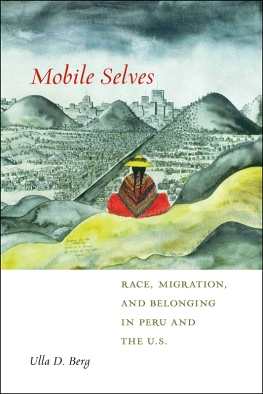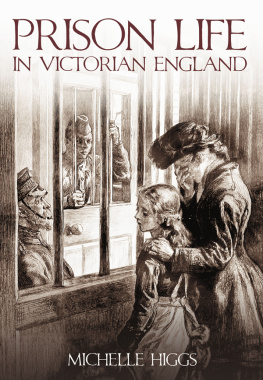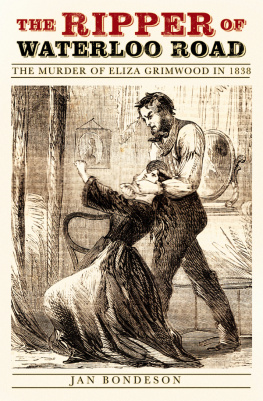First published 1989 by Transaction Publishers
Published 2017 by Routledge
2 Park Square, Milton Park, Abingdon, Oxon OX14 4RN
711 Third Avenue, New York, NY 10017, USA
Routledge is an imprint of the Taylor & Francis Group, an informa business
Copyright 1989 by Taylor & Francis.
All rights reserved. No part of this book may be reprinted or reproduced or utilised in any form or by any electronic, mechanical, or other means, now known or hereafter invented, including photocopying and recording, or in any information storage or retrieval system, without permission in writing from the publishers.
Notice:
Product or corporate names may be trademarks or registered trademarks, and are used only for identification and explanation without intent to infringe.
Library of Congress Catalog Number: 881342
Library of Congress Cataloging-in-Publication Data
Bondeson, Ulla, 1937
Prisoners in prison societies.
Bibliography: p.
1. PrisonsSweden. 2. PrisonersSwedenAttitudes. 3. Prison psychology. 4. CorrectionsSweden. 5. Correctional psychology. I. Title.
| HV9737.B6513 | 1988 | 365 .6 09485 | 881342 |
| ISBN 0-88738-205-3 |
ISBN 13: 978-1-4128-4235-8 (pbk)
ISBN 13: 978-0-88738-205-5 (hbk)
The English edition of this book differs in many ways from the previous Swedish one, Fngen i fngsamhllet (Prisoners in Prison Societies), which was in 1974 my doctoral dissertation comprising of 630 densely set pages. By updating, as well as eliminating, several chapters and by condensing the text in several ways, the present book has become more pertinent to the 1980s, in addition to being more compact. The chapters that have been eliminated, apart from the introductory and concluding ones, contained more detailed reviews of evaluation research, prison riots, reforms and prevention theories as judged by the inmates, a report on inmate political attitudes, and descriptions of prison democracy. Elements of those deleted chapters have been incorporated into the remaining chapters.
The book now concentrates on comparisons of penalties, at the expense of descriptions of separate correctional institutions. It also emphasizes the first questionnaire more than the second. Many tables and figures have been eliminated.
Apart from expanding the text concerning recent developments in the correctional system and in research, the post-release follow-up study is described here for the first time. All of the approximately 1,000 inmates who were interviewed in 1970 have been followed throughout a subsequent ten-year period, and detailed recidivism information has been collected. In addition, a great amount of data has been collected about their social and economic adjustment for the entire period.
The idea behind the criminal career study was to see whether the prisonization observed in the first study has a long arm and can affect later recidivism. This type of a combined institutional and effect study is still rather rare in penology because of the effort and money involved. Furthermore, sophisticated statistical analyses have been introduced into criminology from medicine in the form of a so-called survival model.
is an attempt to make a general assessment of the effects of institutional life, balancing the positive and the negative effects.
is an attempt to measure the positive effects that might result from treatment and care, vocational training, academic education, etc.
, prisonization is related to recidivism and the Cox regression model demonstrates a significant effect.
analyzes the implications of the negative individual prevention as to levels of incarceration. Impediments to reform, such as theories of general prevention and the general sense of justice are analyzed. The penal value of imprisonment is related to the just deserts or neoclassical theory. Finally, there is a discussion of alternatives to imprisonment in relation to the objective of criminal policy of minimizing and of justly distributing the costs and suffering caused by crime and by societys methods of crime control.
This research could not have been carried out without the financial aid and help of many devoted collaborators. The Swedish Council for Research in the Humanities and Social Sciences has generously given grants for the first phase of the study and for translation and publication. Lnsfrskringsbolagets research fund has supported the follow-up study, particularly through its dedicated former research chairman, Jarl Hjalmarson. The data collection in the follow-up study was carried out by Greger Bodin and later administration of data was carried out by Bjarne Angels. Karen Leander went through the labors of translating and contributed good ideas. The translation was checked by Gitte Hyer, who retyped the manuscript with unquenched energy. Peter Garde has kindly gone through the whole manuscript, Annika Snare has read the first and last chapters, and Gene Lutz the last chapter, and all have given valuable comments. Per Kragh Andersen collaborated on the survival model and is co-author of . Professor Daniel Glaser devotedly edited the manuscript, gave many suggestions for revision, and checked the English formulations of these. Marie Stender and Britta Mogensen competently helped with the final revisions.
In addition, I want to express my appreciation for the scientific environments that I have been profiting from during my university career, first the Department of Sociology, later the Department of Sociology of Law at Lund University, and since several inspiring years at the Institute of Criminal Science at the University of Copenhagen. Moreover, I have had the privilege of being a visiting scholar at several U.S. establishments: the Department of Sociology at the University of Minnesota, the Institute of Law and Society at Berkeley, the Law Schools of Harvard and Yale, and the Department of Sociology at the University of California, Santa Barbara, and at U.C.L.A.
My criminological research has also been highly stimulated through active participation in several organizations, such as the Scandinavian Research Council for Criminology, the Nordic Criminalist Societies, the American Society of Criminology, and the International Society for Criminology.
Ulla Viveka Bondeson










